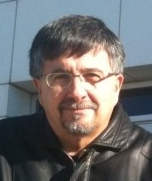The 1st IASTED International Conference on
Unconventional Oil Technology
TECH 2011
July 4 – 6, 2011
Calgary, AB, Canada
INVITED SPEAKER
In Reservoir Upgrading of Bitumen and Heavy Oils
Duration
60 minutes
Abstract
With the deployment of thermal in situ bitumen production technologies based on the use of steam, a different engineering approach compared to conventional oil exploitation has resulted. Steam Assisted Gravity Drainage (SAGD), for example, allows the development of a relatively confined liquid and gas chamber surrounding and along the length of the production wells. This chamber, in virtue of the heat carried there with steam, reaches temperature levels in between 180-250 C. This stationary heated place can be converted into a reactor for in situ upgrading processes, or as an upgrading initiation place integrated to field upgrading technologies which could result in environmentally-economically sound options. Temperature levels in the reservoir zone can be increased beyond steam limitations by at least partially rescinding of it as a heat carrier. Thus, new technologies raising expectations of extensive reservoir upgrading of unconventional oils can be thought of. In-Situ hybrid processes of recovery-upgrading, with delivery of dispersible catalysts and reactants, have the potential to produce upgraded petroleum in situ. These processes would reduce the total energy currently required to both exploit the reservoir and surface upgrade the produced bitumen. These could also selectively transform contaminants into harmless products remaining in the reservoir.Unconventional oils such as the ones abundant in Canada and Venezuela require twice the amount of hydrogen to get to refined products than light crude oils. However, it is shown in this paper that the hydrogen per barrel needed to get these oils to transportable viscosities, is almost one order of magnitude lower than what is needed in traditional upgrading setups. This is a strong motivation to develop in situ or field upgrading processes. This talk highlights refocused in situ upgrading paths that may result in much needed economically and environmentally efficient oil sands exploitation methods.
Biography of the Invited Speaker

Dr. Pedro R. Pereira-Almao received his PhD in Heterogeneous Catalysis from L'Universite de Poitiers, France in 1979. He became an Associate professor from 1980 until 1987 with the Department of Chemical Engineering at the Universidad de Los Andes, Venezuela and later a visiting professor and postdoctoral fellowship at the University of California Berkeley-Lawrence Berkely National Laboratory where he was the R&D Leader on steam coal gasification, and methane coupling with the group of Gabor Somorjai. He made a substantial contribution at PDVSA-Intevep, Venezuela's national oil company over the course of 14 years, specializing in catalysis for heavy hydrocarbon processing and co-inventing and co-developing two major heavy oil upgrading technologies: Aquaconversion and HDHplus. He was project leader of heavy oils and residuals upgrading at PDVSA-Intevep from 1990 to 1999 and Department manager of heavy oils processing at the same institution from 2000 until 2002. Recruited by the University of Calgary in 2003 as an Alberta Ingenuity Scholar and professor for the Schulich School of Engineering, Dr. Pereira-Almao became Director of the Ingenuity Centre for In Situ Energy and in March 2011 was awarded with the NSERC/NEXEN/Alberta Innovates Energy and Environment Solutions Industrial Research Chair in Catalysis for Bitumen Upgrading. He is the author of more than 80 published articles with more than 20 invited international conferences, and ten original patents.







